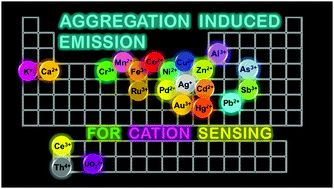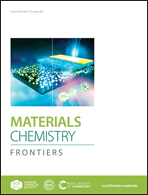Recent advances in cation sensing using aggregation-induced emission
Abstract
The discovery of the aggregation-induced emission (AIE) phenomenon about two decades ago has ever since changed our mutual understanding of the aggregation of organic luminogens which always quenches their fluorescence. Not only have limitations imposed by aggregation-caused quenching (ACQ) on conventional luminogens been overcome, but applications including bioimaging and biosensing, optoelectronics, stimuli-responsive materials and chemical sensing have been extended as well. Amongst these, chemical sensing plays an important role in the areas of biomedical imaging and environmental monitoring. A large number of AIE-based chemosensors have been developed for detecting numerous chemical species, ranging from small molecules to cations and anions. Given the important biological roles that cations may play and the harmful effects that cations may bring about, cation sensing has emerged as a fascinating topic. In this paper, recent advances in the development of AIE-based chemosensors for a full spectrum of cations including s, p, d and f-block cations are reviewed. The strategies to design the chemical structures of cation chemosensors, sensing mechanisms and sensing performances including sensing sensitivity and selectivity are summarized and compared. Further challenges and opportunities in the field of AIE-based chemosensors for cations are also commented.

- This article is part of the themed collections: FOCUS: Recent progress on aggregation-induced emission and 2021 Materials Chemistry Frontiers Review-type Articles


 Please wait while we load your content...
Please wait while we load your content...